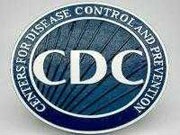 |
 |
 |

U.S. Chlamydia Infections Hit All-Time High
Million-plus cases reported; women and minorities disproportionately affected, CDC says|
|
HealthDay
Tuesday, January 13, 2009
 TUESDAY, Jan. 13 (HealthDay News) -- The number of Americans newly infected with the sexually transmitted diseases chlamydia and syphilis continues to rise, federal health officials reported Tuesday, with chlamydia infections hitting a record million-plus new cases annually.
TUESDAY, Jan. 13 (HealthDay News) -- The number of Americans newly infected with the sexually transmitted diseases chlamydia and syphilis continues to rise, federal health officials reported Tuesday, with chlamydia infections hitting a record million-plus new cases annually.
The numbers, from 2007, show that cases of chlamydia as well as syphilis rose for the third year in a row, according to a report by the U.S. Centers for Disease Control and Prevention (CDC).
"The bad news from last year has continued," said Dr. John M. Douglas Jr., director of the CDC's Division of STD Prevention. "These infections remain at very high levels, and frankly, unacceptably high."
Chlamydia and gonorrhea, the two most commonly reported infectious diseases in the United States, together accounted for almost 1.5 million reported cases of sexually transmitted disease (STD) in 2007.
"Chlamydia is at a new all-time record 1.1 million cases -- it went up about 7 percent since 2006," Douglas said. "Gonorrhea is about at 355,000 cases."
STDs, although easily diagnosed and treated, frequently occur without symptoms and may go untreated. Left untreated, chlamydia and gonorrhea can result in pelvic inflammatory disease -- a condition that causes as many as 50,000 U.S. women to become infertile each year, according to the report, Sexually Transmitted Disease Surveillance, 2007.
The overall rate of chlamydia infections among women was 543.6 cases per 100,000 females, almost three times the rate among men -- 190 cases per 100,000 males, the report said.
The increasing number of chlamydia cases is actually a reflection of more people being screened, not a greater incidence of the disease in the population, Douglas said. "It's kind of a mixed piece of good news. We wish those numbers were going down, but we know they have to go up before they go down," he said.
Gonorrhea rates have been stable for about the last 10 years, Douglas said. "This is stable at quite a high level. It represents an example where we have a job half done. Gonorrhea has come down since its highpoint in the 1970s, but we just got stuck in the late 1990s, and we've been stuck ever since then," he said.
Rates of gonorrhea were also higher among women -- 123.5 per 100,000 women -- compared with 113.7 per 100,000 men, according to the report.
But these numbers are probably just the tip of the iceberg, Douglas noted. The CDC estimates that only half of all new chlamydia and gonorrhea infections are reported, bringing the actual number of infected people to more than 3 million.
"We think there are really 2 to 2.5 million cases of chlamydia a year," he said.
The report also found continued increases in rates of syphilis. On the verge of elimination just a decade ago, syphilis rates began increasing in 2001 and rose 15.2 percent between 2006 and 2007, Douglas said.
"We got set back in a recurrence of syphilis among men who have sex with men," Douglas said. "There has been limited success in trying to curb that, but we have begun to see a slide in some of the better-controlled populations."
The increases in syphilis in 2007 were predominately among women. "We have seen increases in babies, which is the ultimate innocent bystander population," Douglas said.
What's more, if you have syphilis, you also have a 50 percent chance of being HIV-positive, he added.
The report found continued racial disparities for STD cases. Gonorrhea was 19 times more common among blacks than whites; chlamydia was eight times more common; and syphilis was seven times more common, Douglas said.
Black women 15 to 19 years old had the highest rates of both chlamydia (9,647 per 100,000 population) and gonorrhea (2,956 per 100,000 population), according to the report.
Sexually transmitted diseases take a significant economic toll -- the CDC estimates that STDs cost the U.S. health-care system an estimated $15.3 billion annually.
Douglas said greater public health campaigns are needed to reverse the trend.
"These diseases can be treated, and we need to have better awareness about how extensive these infections are and what the prevention opportunities are," he said.
Dr. David L. Katz, director of the Yale University School of Medicine Prevention Research Center, said sexually transmitted diseases are a considerable public health burden.
"By serving up crucial details on where and in whom sexually transmitted diseases are most likely, this report helps inform disease-control programs. By highlighting the persistent prevalence of these diseases, it also issues a call to action," he said.
HealthDay
Copyright (c) 2009 ScoutNews, LLC. All rights reserved.
Related News:
- More News on Health Disparities
- More News on Health Statistics
- More News on Sexually Transmitted Diseases
More News on this Date
Related MedlinePlus Pages:
| Home | Health Topics | Drugs & Supplements | Encyclopedia | Dictionary | News | Directories | Other Resources | |
| Disclaimers | Copyright | Privacy | Accessibility | Quality Guidelines U.S. National Library of Medicine, 8600 Rockville Pike, Bethesda, MD 20894 National Institutes of Health | Department of Health & Human Services |
Date last updated: 14 January 2009 |




